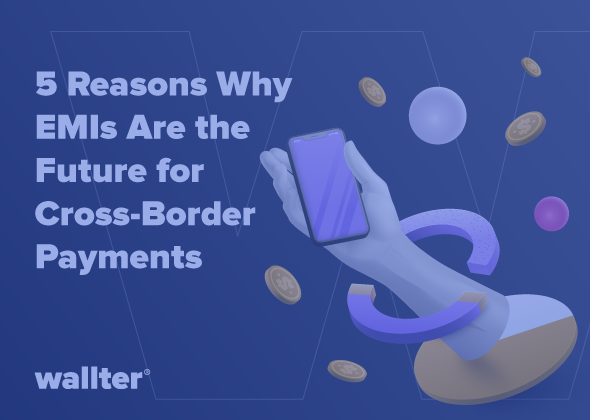Our perception and comprehension of what “money” is and how it operates is changing. It’s clear that the interest in digital payments and assets has been increasing — in fact, it’s been on the minds of both individuals and corporations.
To understand where we are heading better, it’s crucial to remember where we started. With this in mind, Fernando Farji, Risk Manager at Wallter®, has outlined the major stages through which money has evolved, from commodity money to digital money.
Renowned authorities in different fields have expressed that Cryptocurrencies are Money. But should we question this comparison? What are the differences and the common denominators between Money and Cryptocurrencies?
Commodity Money
We desire goods and services to satisfy our needs. For example, if we need to eat, get dressed, have a house to live in or/and work, travel abroad, get legal advisory, have a TV signal, and so forth, we need to search and find the right place to acquire them. If these goods and services do not come for free, a transaction is fulfilled when “something” is given in exchange for what it is received. As we all know, societies have developed a legal background regarding what this “something” is.
Although throughout history different things have been used to settle transactional operations depending on specific places where the operation took place (kettle, salt, cocoa beans, shells, gold, silver, precious stones, etc.), the good that was chosen had these qualities: a) Long lasting, b) Transportable, c) Divisible, d) Homogeneous, and c) Of limited supply.
Focusing on these cited qualities usually, gold and silver were chosen as means of exchange. Nevertheless, gold coins could be altered, which is why competent third parties (the authority) came into the system and started issuing and giving them in sealed bags and with stamps.
One important consideration is that all these goods have intrinsic value. They serve as a means of exchange and they also serve as a good.
Paper & Metal Money
Once different economies started developing and interacting frequently, gold and silver, became expensive and very limited, which is why the authorities had to come up with something else that could keep up with the level of national and international activities.
Parallel to this, people started to safeguard their gold in goldsmith safes, and they received a “paper note” called a deposit. After that, this note would also be extended to the holder and started to circulate through the economy. This is how “paper” and the lower quality metal coins (copper, aluminum, zinc, and tin) come into place. They were called fiduciary money, which means their value “depended on the faith (trust)”.
Economic System
Nowadays, there are two main forces driving the Economic Systems – the Individual and the Collective.
The Collective force is represented by the government and institutions each country has. On the other hand, the Individual force is what everyone wants to achieve under the Collective force. Both of these are constantly interacting and modifying the playground.
From a Collective perspective, Money is what the government establishes as legal course currency. It has attached mechanisms to sustain the value and give ‘trust’ to support it. But what happens when these conditions are not met? Individuals start searching for alternatives to sustain their level of consumption.
This raises the question: Why do people even want money? The commonly accepted answers are 1) As a means of exchange, 2) As a unit of account (prices and books are being kept), and 3) As a store of value. Of course, we should point out that healthy, strong economies issue stable and dependable legal currencies.
Crypto Money
“There is still a not well-defined role of cryptocurrencies in the economy”.
After all we have stated above, what can be said about the role of cryptocurrencies in the economy.
From the functions of Money perspective:
- They are not widely accepted as means of exchange,
- They cannot be used as a unit of account in all countries and
- Because of their huge fluctuations cannot be seen as a store of value.
As for the Money qualities:
- They are long-lasting,
- Easy to send and receive,
- They are Divisible (But over-divisible),
- Are homogenous, and
- Limited supply (not on the commonly known terms)
Last Considerations
Inefficiencies in the fiscal and monetary policy and banking system (limited money transfer operations and payments) brings instability to the individual force. This has made cryptocurrencies appear as a solution, but as of today, there is still a long way to go as a better means of transaction is required to bring equilibrium between Collective and Individual forces.
Meanwhile, strong legal currencies will be preferred over cryptocurrencies because they are the universal means known to acquire goods and services. Still, the situation will probably continue to change…
At Wallter® we believe that we can use our unique services to contribute to the establishment of a sound financial and monetary system where freedom of choice is guaranteed. This system would be governed by compliance rules based on inclusion and diversity criteria.
Ultimately, we feel that technology can be used as a means to improve the financial connectivity of the world and expand capabilities of employment creation and innovation, which would result in an equilibrium between collective and individual forces.



